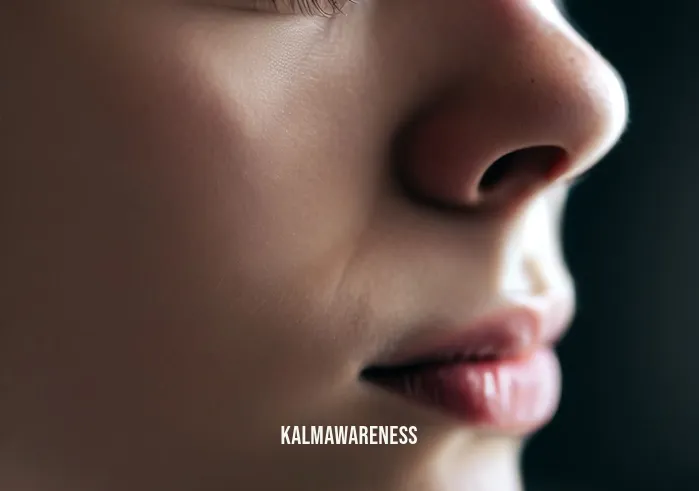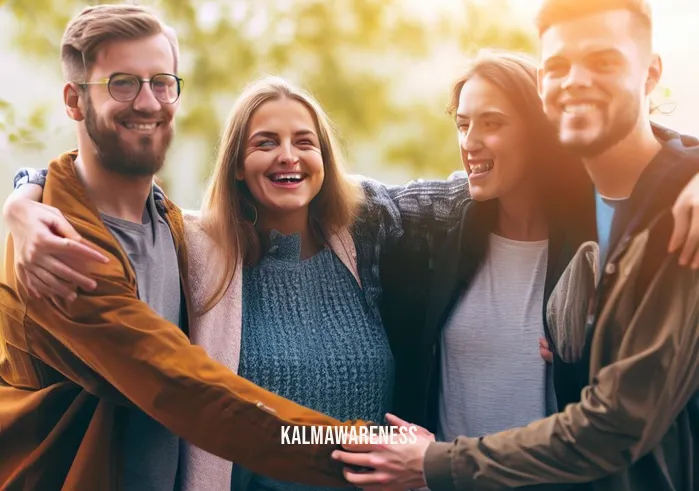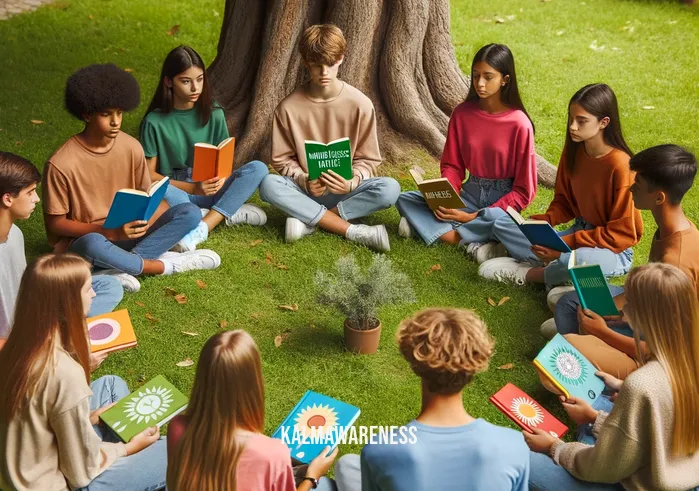Mindfulness Survey for Students: Exploring the Impact on Education and Mental Health
In today’s fast-paced world, mental health, especially among the youth, has become a pressing concern. The landscape of education is evolving, and there is an increasing emphasis on equipping students not just with academic knowledge but also with tools to manage their mental well-being. One such tool, gaining immense popularity and backed by research, is mindfulness. In this introductory segment, we delve into a comprehensive overview of the mindfulness survey for students. We explore its significance, delve into some practices, and set the stage for an in-depth discussion in the subsequent segments.
Why Is Mindfulness Relevant for Students?
For many students, the pressures of academia, coupled with the challenges of adolescence, can be overwhelming. Stress, anxiety, and other mental health concerns are prevalent. A report from Kalmawareness sheds light on the growing anxiety epidemic and its impact on student well-being. It’s evident that solutions are needed, and mindfulness might just be one of the answers.
Mindfulness, at its core, is about being present. It involves tuning into the current moment, observing thoughts without judgment, and fostering an awareness of one’s surroundings. The practice, which has roots in ancient meditation traditions, has been modernized and adapted for today’s challenges. For instance, Mindful Solutions in Jackson, MS, offers programs tailored for the youth, addressing their unique needs and concerns.
The Rise of Mindfulness Practices in Education
Research suggests that mindfulness can offer numerous benefits to students. It can improve focus, reduce stress, foster emotional intelligence, and even boost academic performance. Schools and institutions are recognizing these benefits. For instance, UCLA’s MARC (Mindful Awareness Research Center) is dedicated to studying and promoting mindfulness in various settings, including schools.
Yet, introducing mindfulness in schools isn’t merely about telling students to meditate. It’s about creating an ecosystem where practices like mindful daydreaming are embraced, where educators are trained to teach beyond traditional methods, much like what’s discussed in Teaching Yoga Beyond the Poses.
Challenges and Critiques
While the benefits of mindfulness are vast, it’s also essential to address its critiques. Some argue that it’s a mere buzzword, a temporary solution to a more significant problem. Critics question its effectiveness, pointing out that it might not work for everyone. There’s also a risk of misunderstanding the practice. A dive into the distinction between being mind full or mindful showcases the importance of proper guidance and training in this journey.
However, with resources like the Mindful Health Foundation and platforms dedicated to mindful counseling, there’s ample support for those looking to integrate mindfulness authentically into their lives and educational systems.
The Road Ahead
The exploration of mindfulness in the context of student well-being is a vast and multifaceted one. This segment offers a glimpse into its relevance, the rising practices in education, and the challenges it faces. Yet, there’s so much more to uncover. How are psychologists and researchers, for instance, studying the relationship between meditation and mental health? What role does technology play in promoting mindfulness, especially given tools like Loop vs. Calmer?
While we’ve started our journey into the world of mindfulness surveys for students, the subsequent segments will delve deeper, exploring its nuances, understanding its impact, and highlighting its importance in contemporary education and youth mental health.
To gain a deeper understanding of how mindfulness practices, backed by research, can shape the future of education and mental health, continue reading in the next segment.

The Pivotal Role of Mindfulness Surveys in Student Well-being
The research-backed practice of mindfulness isn’t just another wellness trend; it’s a transformative tool, especially for the youth. As educational institutions endeavor to understand the nuances of student well-being better, mindfulness surveys play a crucial role. In this segment, we’ll delve deeper into the significance of the mindfulness survey for students, presenting its importance through comprehensive data and understanding its vast implications.
Unveiling the Structure of a Mindfulness Survey
Before delving into the survey’s importance, it’s essential to understand its structure. Mindfulness surveys typically gauge the following aspects:
- Awareness: How present and attentive students are in different situations.
- Acceptance: The extent to which students avoid or confront unpleasant thoughts and emotions.
- Stress Reduction: Monitoring students’ stress levels before and after mindfulness interventions.
- Application in Real-life Scenarios: Understanding how students apply mindfulness techniques in everyday situations.
- Perceived Benefits: Gathering student feedback on the positive impacts of mindfulness in their lives.
Core Benefits of Conducting Mindfulness Surveys in Schools
Mindfulness practices, when incorporated into the educational realm, can act as catalysts for profound transformations. Here’s why conducting these surveys is paramount:
Holistic Understanding: Schools gain insights into the collective mental well-being of their student body, identifying common stressors and triggers.
Tailored Interventions: Based on the survey outcomes, educators can curate specific mindfulness programs addressing the unique needs of their students, such as mindful walking techniques or exercises focusing on attaining a peaceful state of mind.
Feedback Loop: Regular surveys help schools refine and iterate their mindfulness curriculum, ensuring it remains effective and relevant.
Empowerment: The data empowers students, making them stakeholders in their well-being journey. Being aware of their mental patterns helps them seek appropriate resources, like the insights from I Only Have One Thing on My Mind or platforms like Mindful Minds.
Research Contribution: These surveys provide valuable data to the global research community, enhancing our understanding of mindfulness and its impacts on the youth.
Mindfulness Surveys at a Glance: A Quick Overview
| Aspect Covered in the Survey | Typical Questions | Expected Outcomes |
|---|---|---|
| Awareness | How often do you find yourself getting lost in thoughts during class? | Gauge student’s attentiveness |
| Acceptance | Do you try to avoid feelings of sadness or anxiety when they arise? | Measure their confrontational vs. avoidant behavior |
| Stress Reduction | On a scale of 1-10, how stressed do you feel before and after practicing mindfulness? | Quantify the effectiveness of mindfulness practices |
| Real-life Application | How often do you use breathing techniques during stressful situations? | Understand practical applicability |
| Perceived Benefits | Has mindfulness improved your focus in studies? | Accumulate feedback on positive impacts |
The table provides a concise view of what a mindfulness survey entails, showcasing its comprehensive nature.
Gearing Up for the Next Leap in Mindfulness Research
With mindfulness steadily cementing its place in educational institutions, the role of these surveys becomes even more vital. They’re not just tools for gauging student well-being; they’re instruments of change, driving schools towards a future where mental well-being is as prioritized as academic excellence. And as we look forward to the future, we must also explore the broader ecosystem of mindfulness, understanding its place in modern society and its intersections with technology, media, and culture.
Are you intrigued about how modern technology is revolutionizing mindfulness practices or curious about the role of documentaries in propagating the message of mindfulness? Dive into these aspects and more as we continue our exploration in the next segment.

Stories of Change: The Heartwarming Impact of Mindfulness Surveys on Students
In the evolving landscape of education, mindfulness isn’t just a buzzword; it’s a beacon of hope, a guiding light illuminating the paths of countless students. Mindfulness surveys serve as the bridge between the abstract concept of mindfulness and tangible change in students’ lives. In this segment, we delve into heartwarming tales and inspiring quotes that underscore the transformative power of these surveys.
The Power of Awareness: Sarah’s Story
Sarah, a high-schooler, was always known for her impeccable academic record. But behind that façade was a tumultuous world of stress and anxiety. Her school decided to implement mindfulness practices based on feedback from a mindfulness survey.
Post-survey, Sarah was introduced to meditation practices inspired by Aphantasia Meditation. These techniques taught her to visualize peaceful scenarios, calming her mind. Within months, Sarah was not only performing better academically but was also a happier, more content individual.
“In the midst of chaos, there is also opportunity.” – Sun Tzu
This quote resonates with the essence of mindfulness surveys. Amidst the daily chaos of academic pressures and personal challenges, these surveys open doors to opportunities — opportunities for growth, understanding, and healing.
The Ripple Effect: From Individual to Community
James, a college student, had always been a natural leader. However, with leadership came the pressure of expectations. When his college introduced a mindfulness program based on a comprehensive mindfulness survey for students, James was skeptical. But, deciding to give it a try, he attended a seminar on mindful health foundation practices.
The impact was profound. James not only adopted mindfulness techniques but also started a peer group, encouraging fellow students to share their experiences and challenges. This created a ripple effect, with more students feeling heard, understood, and supported.
“The mind is everything. What you think, you become.” – Buddha
A testament to the power of thought, this quote emphasizes the core principle behind mindfulness: harnessing the power of the mind. By becoming aware of their thought patterns, students can channel positive energy and manifest their best selves.
Breathing Life into Dreams: Mia’s Journey
Mia, an aspiring athlete, faced immense performance pressure. Physical training was rigorous, but mental stress was taking a toll. Based on insights from a mindfulness survey, her coach introduced her to breathing and meditation techniques.
Months later, not only did Mia secure a place in a national team, but she also became an advocate for mental well-being, emphasizing the need for balance in pursuit of one’s dreams.
“To understand the immeasurable, the mind must be extraordinarily quiet, still.” – Jiddu Krishnamurti
Echoing the sentiment of mindfulness, this quote underlines the essence of stillness. In the hustle of life, taking a moment to breathe and reflect can reveal profound insights, something that mindfulness surveys for students strive to achieve.
Embarking on New Horizons
The stories of Sarah, James, and Mia aren’t unique. They resonate with countless students worldwide who, through mindfulness surveys, have embarked on a transformative journey. While they began as mere participants in a survey, today, they stand as testimonials to the power of awareness, acceptance, and the human mind’s resilience.
But the journey doesn’t end here. As we uncover these stories of hope and inspiration, it’s also crucial to understand the broader spectrum of mindfulness, its evolution, and the future roadmaps educational institutions envision.
Ready to discover the strategic implementations and the future outlook of mindfulness in education? Dive deeper as we unfold these layers in the next segment.

Understanding the Mechanics: An In-depth Look into Mindfulness Surveys for Students
Mindfulness, in its essence, encapsulates a simple yet profound concept: being present. However, when this concept is transformed into a structured practice for students, several intricacies arise. Mindfulness surveys for students become the linchpin, navigating these nuances. This segment delves deep into the mechanics of these surveys, breaking down their components, methodology, and significance.
Key Components of Mindfulness Surveys for Students
Mindfulness surveys for students aren’t mere questionnaires; they’re carefully curated tools designed to capture the multifaceted nature of student well-being. Here are their key components:
Demographics: Understanding the background of the students to discern patterns and tailor interventions effectively. Factors include age, grade, academic performance, and extracurricular involvements.
Frequency of Practice: Gauging how often students practice mindfulness. This can range from daily practices to occasional sessions during high-stress periods.
Mindfulness Techniques: Determining which techniques resonate most with students. Some might prefer mindful daydreaming, while others might lean towards breathing exercises.
Challenges in Practice: Identifying barriers or obstacles students face while practicing mindfulness. This can be external, like distractions, or internal, such as difficulty in focusing.
Perceived Impact: Assessing students’ perspectives on how mindfulness has benefited their academic, emotional, and social lives.
Methodology: Crafting a Comprehensive Survey
Open-ended Questions: To understand personal experiences and stories. For instance, “Describe a situation where mindfulness techniques helped you overcome stress.”
Likert Scales: Useful to gauge the intensity of feelings or perceptions. An example being, “On a scale of 1-5, how confident are you in applying mindfulness techniques during exams?”
Multiple-choice Questions: To categorize responses and gather quantitative data. For example, “Which mindfulness technique do you practice the most?” with options like meditation, breathing exercises, or mindful walking.
Scenario-based Questions: Providing hypothetical situations to assess students’ likely reactions. E.g., “If you’re feeling overwhelmed before a test, what would you do?” with options spanning from taking deep breaths to seeking support from a teacher.
Significance: Why Mindfulness Surveys Matter?
Data-Driven Decision Making: Schools and institutions can make informed choices about implementing mindfulness programs, ensuring they address the specific needs of their student body.
Evolving Curriculum: By understanding the ever-changing dynamics of student well-being, schools can adapt their mindfulness curricula, keeping them relevant and effective.
Empowering Students: By being participants in these surveys, students not only voice their challenges but also become co-creators of their well-being journey. Resources like Mindful Minds become more accessible and tailored to their needs.
Promotion of Mindfulness Culture: Surveys provide tangible evidence of the benefits of mindfulness, making it easier for educational institutions to propagate and embed this culture.
Charting the Path Ahead: What Lies Beyond?
Having unraveled the mechanics of mindfulness surveys for students, it’s evident that they are more than mere tools; they’re transformative agents. But understanding the survey is only half the journey. The subsequent steps involve analyzing this data, implementing insights, and constantly refining the approach to student well-being.
Are you curious about how educational institutions leverage the insights from these surveys? Or how students and educators co-create a nurturing, mindful environment? Join us as we conclude our exploration, diving into the real-world applications and future horizons of mindfulness in the next segment.

Reflecting on the Transformative Power of Mindfulness Surveys for Students
As we draw the curtains on our enlightening journey, it’s time to pause, reflect, and truly appreciate the multifaceted world of mindfulness surveys for students. These tools, which began as mere questionnaires, have revealed themselves as vital catalysts in reshaping the educational landscape, ushering in a more compassionate, understanding, and mindful era.
A Journey Worth Undertaking
From understanding the mechanics of these surveys to being moved by heartwarming tales of transformation, we’ve ventured deep into the heart of student well-being. Let’s take a moment to reminisce:
The Roots: Establishing the foundational importance of these surveys in the broader context of education and mental health.
Stories of Change: Witnessing the real-world impacts, with students like Sarah, James, and Mia finding solace and empowerment through mindfulness.
Demystifying the Process: Breaking down the intricate components and methodologies, showcasing the thought and care that goes into crafting these surveys.
Learning and Growing: The Road Ahead
Mindfulness, as captured beautifully in Mindful Daydreaming, isn’t just about being present; it’s about cultivating a deep sense of connection — to oneself and the world. And while our exploration of mindfulness surveys concludes here, the broader journey of understanding and embracing mindfulness continues.
For those intrigued by the mindfulness realm’s myriad facets, diving into resources like Mindful Health Foundation can offer further insights. And for those who wish to experience a refreshing blend of mindfulness and technology, exploring platforms like Loop vs. Calmer can be an enriching experience.
Taking the Next Step: Your Call to Action
With the knowledge you’ve gathered, it’s time to embrace and apply these insights. Whether you’re an educator aiming to integrate mindfulness into your curriculum or a student seeking peace amidst chaos, remember — the key lies in being present, being aware, and above all, being kind to oneself.
For Educators: Revisit the section on Crafting a Comprehensive Survey to create tailored mindfulness programs for your students.
For Students: Dive deep into practices from resources like Breathing and Meditation Techniques to equip yourself with tools for inner peace.
Signing Off With Gratitude
To our dear readers, thank you for embarking on this insightful voyage with us. Your curiosity and quest for knowledge are the driving forces behind our content. As we conclude this chapter, rest assured, many more enlightening explorations await in our upcoming editions.
Stay mindful, stay curious, and always remember — the journey is as important as the destination. Until next time!





